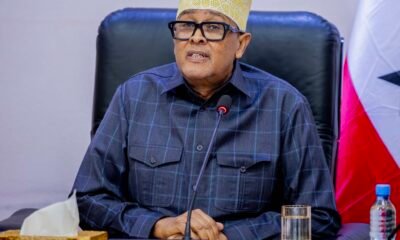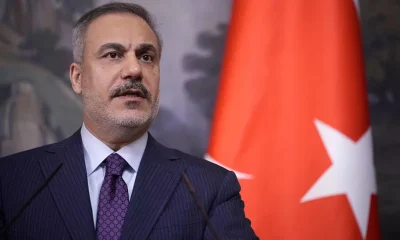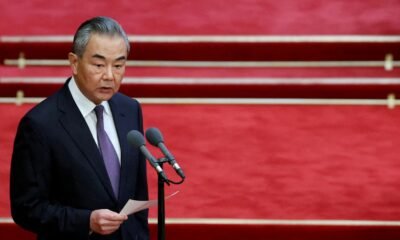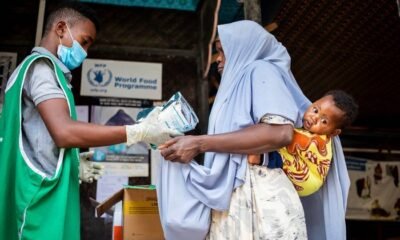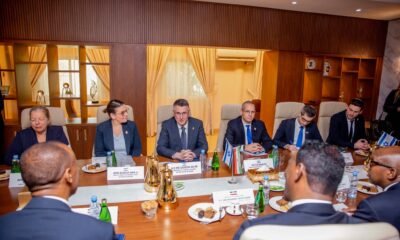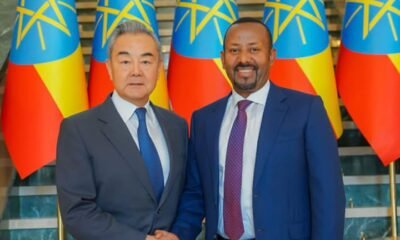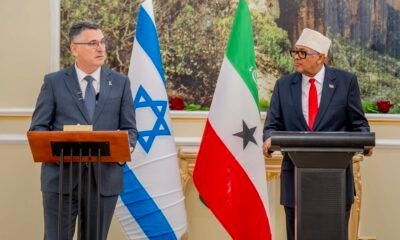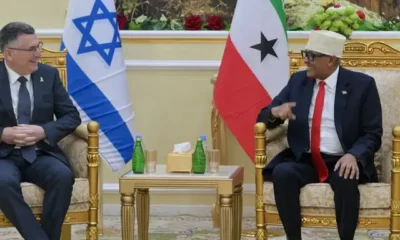Top stories
FAO Secures $25 Million to Boost Somalia’s Food Security
Food Security Amidst Conflict: FAO’s Bold Move in Somalia
The Food and Agriculture Organization of the United Nations (FAO) has announced a transformative $25 million project aimed at bolstering food security and resilience in Somalia. Dubbed TRANSFORM, this initiative is part of the broader Johwar Offstream Storage Program (JOSP), which seeks to rehabilitate critical infrastructure and promote climate-smart agriculture in Jowhar city, Hirshabelle state.
FAO Country Representative Etienne Peterschmitt emphasized the significance of this funding, stating, “This collaborative model not only enhances the effectiveness of individual initiatives but also builds a sense of shared responsibility and collective action for the transformation of Somalia’s food system.” But what does this really mean for the region, and can it deliver on its promises?
Proponents of the project highlight its comprehensive approach to addressing food security. By providing flood protection and reliable irrigation, Somali farmers can use their land more productively and sustainably. This initiative includes developing a comprehensive JOSP governance plan, conducting environmental and social safeguarding studies, and addressing conflict mitigation, land tenure management, and durable solutions for displaced populations.
FAO’s initiative promises to enhance access to water for nearly 370,000 people across five districts, reduce flood risk for 1.5 million people, and mitigate drought impact for 1.65 million people. If successful, this could mark a significant step towards sustainable agriculture in Somalia, boosting local economies and improving the livelihoods of countless families.
However, skeptics argue that the challenges facing Somalia’s agricultural sector are deeply entrenched and cannot be resolved by financial injections alone. The region’s history of conflict, political instability, and environmental disasters poses significant risks to the project’s success. Past initiatives have often failed to deliver on their promises, with funds sometimes diverted or mismanaged due to corruption and inefficiency.
Moreover, the project’s ambitious goals may be hampered by logistical issues, such as inadequate infrastructure and the difficulty of coordinating efforts in a region plagued by insecurity. There is also concern about the project’s ability to achieve long-term sustainability without continuous international support and oversight.
For Somali farmers like Amina, who has struggled with erratic rainfall and poor yields, the FAO’s project offers a glimmer of hope. “With reliable irrigation, I can finally plan my crops better and ensure a steady income for my family,” she says. Amina’s story is just one of many that underscore the urgent need for effective agricultural solutions in the region.
Meanwhile, community leaders like Mohamed are cautiously optimistic. “We’ve seen many promises before, but if this project can deliver, it could change everything,” he remarks. The success of this initiative could foster a sense of empowerment and stability in a region that has long been on the brink of despair.
The implications of this project extend beyond Somalia’s borders. A stable and food-secure Somalia could contribute to broader regional stability in the Horn of Africa. It could also set a precedent for other countries grappling with similar challenges, showcasing the potential of climate-smart agriculture and comprehensive development programs.
From a global perspective, this initiative aligns with international efforts to combat hunger and promote sustainable development. The success or failure of FAO’s project could influence future policies and funding decisions by international organizations and donor countries.
In conclusion, the FAO’s $25 million project in Somalia is a bold and necessary step towards addressing food security in a region fraught with challenges. While the initiative has the potential to transform the agricultural landscape and improve countless lives, it must navigate a complex web of political, logistical, and environmental hurdles.
The true test will be in its implementation and the ability to maintain momentum amidst inevitable setbacks. As Somalia and the international community watch closely, the outcomes of this project could shape the future of development efforts in the Horn of Africa and beyond.
Top stories
Greenland: Europe Draws Red Line as Trump Threatens Force
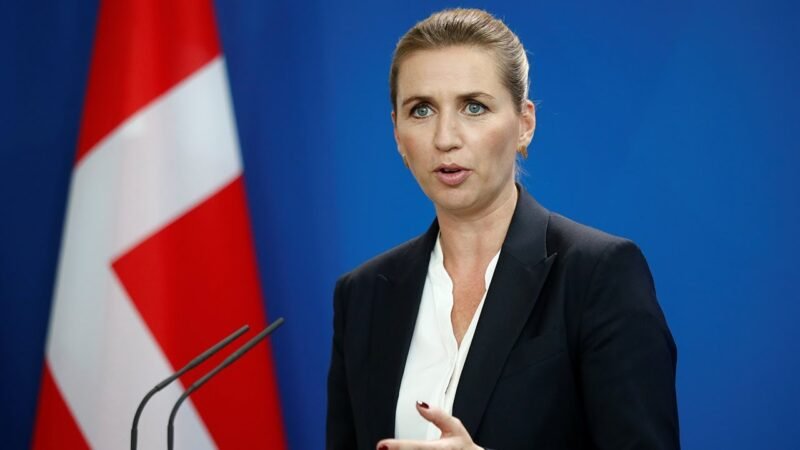
Denmark Says Greenland Crisis at ‘Decisive Moment’ After Trump Renews Threats.
Denmark has warned that the standoff over Greenland has reached a decisive and dangerous moment, after U.S. President Donald Trump again suggested Washington could seize the Arctic territory “whether they like it or not.”
Danish Prime Minister Mette Frederiksen framed the confrontation as far bigger than Greenland alone, calling it a test of international law, sovereignty, and the right of peoples to self-determination. “There is a conflict over Greenland,” she said, adding that Denmark is prepared to defend its values — including in the Arctic.
Trump argues that U.S. control of Greenland is essential for national security, citing increased Russian and Chinese activity in the region. But his rhetoric has alarmed European allies, who see forced acquisition as a clear violation of international norms and a dangerous precedent.
Sweden and Germany quickly lined up behind Denmark. Swedish Prime Minister Ulf Kristersson condemned Washington’s “threatening rhetoric,” warning that a U.S. takeover would undermine international law and embolden other powers to redraw borders by force. Germany echoed those concerns, stressing that Arctic security must remain a collective NATO matter, not a unilateral one.
Behind the scenes, the dispute is already reshaping military planning. Reports suggest the UK, France, Germany and other NATO members are quietly discussing contingency plans for a potential NATO mission to protect Greenland, including deployments of troops, warships and aircraft. European officials frame this not as provocation, but deterrence — aimed at Russia, China, and now, increasingly, an unpredictable Washington.
Belgium has gone further, openly calling for a NATO “Arctic Sentry” operation modeled on existing Baltic and Eastern Sentry missions, using joint forces, drones and surveillance to stabilize the High North.
Greenland itself remains firmly opposed to any U.S. takeover. Polls consistently show overwhelming resistance among Greenlanders, who gained home rule in 1979 and continue to debate their future relationship with Denmark — on their own terms.
What makes this moment explosive is not just Trump’s language, but the broader signal it sends. If even allies feel threatened, the rules-based order in the Arctic — long defined by cooperation and restraint — is under real strain.
As Frederiksen put it, Greenland has become the front line in a much larger struggle over power, law and the future of the Arctic.
Top stories
Criminal Probe Against Powell Shakes US Economic Order

Trump Administration Opens Criminal Investigation Into Fed Chair Jerome Powell, Raising Alarm Over Central Bank Independence.
The Trump administration has crossed a historic red line, opening a criminal investigation into Federal Reserve Chair Jerome Powell — a move that has sent shockwaves through financial markets and reignited fears of direct political interference in U.S. monetary policy.
Powell confirmed Sunday that the Department of Justice issued grand jury subpoenas tied to his congressional testimony about the $2.5 billion renovation of the Federal Reserve’s Washington headquarters. But in an unusually blunt public statement, the central bank chief dismissed the probe as a “pretext,” warning that it represents an effort to intimidate the Fed for refusing to bend interest-rate policy to presidential demands.
At its core, this confrontation is not about construction costs. It is about power.
Trump has repeatedly attacked Powell for resisting faster interest-rate cuts, openly threatening to fire him and attempting to remove fellow Fed governor Lisa Cook. The investigation now escalates that pressure into the criminal arena — a step critics say threatens the institutional firewall that has insulated the Fed from politics for decades.
Powell framed the moment starkly: either the Federal Reserve continues setting rates based on data and economic conditions, or monetary policy becomes subject to political coercion. His warning resonated immediately. U.S. stock futures slid, the dollar weakened, and investor anxiety surfaced across global markets — a reminder that confidence in the Fed’s independence underpins the credibility of the U.S. economy itself.
Trump publicly denied knowledge of the probe but continued to deride Powell’s leadership, reinforcing the perception of a coordinated pressure campaign. Legal experts note that under U.S. law, a president can only remove a Fed chair “for cause,” not for policy disagreements — a safeguard now being stress-tested.
The political fallout is growing. Senator Thom Tillis said he would block any new Fed chair nomination until the case is resolved, while Senator Elizabeth Warren accused Trump of attempting a “corrupt takeover” of the central bank. Even some Republican lawmakers are warning that the credibility of the Justice Department itself is now at stake.
With Powell’s chairmanship ending in May and Trump expected to name a successor soon, the timing is no accident. Whether this investigation succeeds or collapses, the signal has already been sent: the independence of America’s most powerful economic institution is under direct assault.
For markets, allies, and rivals alike, this is no longer just a legal dispute — it is a stress test of whether U.S. institutions can withstand presidential pressure in a new era of confrontational governance.
Somaliland
Calls to Bomb Somaliland Trigger Historic Warning

Somalia Revives 1988 Rhetoric: Somaliland Condemns Somalia’s Bombing Threats, Citing 1988 Genocide and Violations of International Law.
Somaliland has issued a sharp diplomatic warning after senior Somali officials openly called for military attacks on its territory, reviving rhetoric that many Somalilanders associate with one of the darkest chapters in their history.
In a statement released this week, the Ministry of Foreign Affairs of the Republic of Somaliland condemned remarks by Somalia’s Minister of Defense, Ahmed Moallim Fiqi, who urged Arab countries — particularly Saudi Arabia — to bomb Somaliland “as they did in Yemen.” Hargeisa said the comments violate international law and the United Nations Charter and amount to incitement of war.
For Somaliland, the language is not abstract. Officials drew a direct parallel to 1988, when the Siad Barre regime hired foreign pilots and mercenaries to bombard Hargeisa and Burao, killing 500 of thousands of civilians in what is widely documented as genocide against the Isaaq population. The reference has struck a nerve across Somaliland, where collective memory of the air raids remains central to national identity.
The Foreign Ministry said the threats underscore why Somaliland remains united in defending its sovereignty, just as it did during the SNM-led resistance of the late 1980s. That uprising ultimately led to Somaliland’s withdrawal from the failed union and the restoration of its independence in 1991.
Hargeisa also dismissed Mogadishu’s threats as hollow, noting that Somalia remains heavily dependent on international aid and has failed for more than two decades to fully secure its own capital from Al-Shabaab. Recent Somalia threats against Israel — following Israel’s recognition of Somaliland — were described by officials as further evidence of political desperation rather than strategic capacity.
Adding to tensions, Somaliland pointed to Turkey’s recent delivery of military equipment to Mogadishu, warning that external militarization risks emboldening reckless rhetoric in an already fragile region.
For Somaliland, the message is clear: calls to repeat the crimes of 1988 will not intimidate a society that survived them. Instead, officials argue, such statements reinforce Somaliland’s case as a stable, self-governing state — and highlight Somalia’s continued struggle as one of the world’s most enduring failed states.
The Ghost of Sovereignty: Mogadishu’s Hollow Claim Over Somaliland Exposed
Middle East
Iran Bleeds as the World Watches: Over 500 Dead, Regime Tightens Grip

Iran Protest Death Toll Surpasses 500 as Trump, Israel Signal Escalating Pressure on Tehran.
Iran’s protest movement has entered its deadliest phase yet, with rights groups reporting that more than 500 people have been killed as security forces intensify a nationwide crackdown. According to the U.S.-based Human Rights Activists News Agency, at least 538 deaths have been documented so far — the vast majority protesters — alongside more than 10,600 arrests. The group warns the true toll is likely higher as Iran enforces near-total internet blackouts and cuts international phone lines.
The numbers point to a regime choosing force over compromise. What began as economically driven unrest has evolved into a direct challenge to clerical rule, met with mass detentions, live fire, and systematic information suppression. Tehran has released no official casualty figures, a familiar tactic during moments of internal crisis.
International pressure is now rising in parallel. President Donald Trump is reportedly weighing options ranging from new sanctions and cyber operations to more direct military measures. Israeli Prime Minister Benjamin Netanyahu added to the pressure by declaring that Israel hopes the “Persian nation will soon be freed from the yoke of tyranny,” a statement that openly frames the unrest as a liberation struggle rather than a domestic disturbance.
Meanwhile, exiled crown prince Reza Pahlavi has stepped forward, signaling readiness to return and oversee a political transition — a move that will further alarm Iran’s leadership, which views alternative centers of authority as existential threats.
The scale of deaths, the regime’s information blackout, and the growing chorus of external voices suggest Iran is approaching a decisive moment. Whether the protests collapse under repression or fracture the system from within may determine not just Iran’s future, but the balance of power across the Middle East.
Top stories
Trump Says Taiwan’s Fate ‘Up to Xi,’ Sparking Alarm Over U.S. Commitment
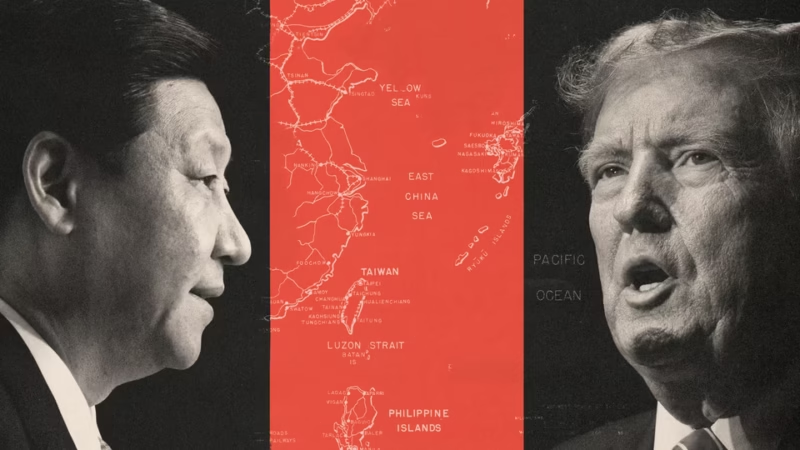
Trump: “It’s Up to Xi” on Taiwan but U.S. Would Be “Very Unhappy” With Change to Status Quo.
President Donald Trump has drawn fresh controversy by saying that Chinese President Xi Jinping ultimately decides what China does regarding Taiwan — effectively placing Taiwan’s future “up to him,” though he warned he would be “very unhappy” with any change to the status quo. Trump made the comments in an interview with The New York Times published Thursday, framing Taiwan’s situation as fundamentally Beijing’s decision and distinguishing it from U.S. actions in Venezuela.
Trump emphasized that Taiwan does not pose the same kind of direct threat to China that Venezuela’s government, in his view, posed to the United States, and expressed confidence that Xi would refrain from military action during his presidency, which runs through 2029. “He may do it after we have a different president, but I don’t think he’s going to do it with me as president,” Trump said.
The remarks prompted concern in Taipei and among U.S. allies, as they appeared to defer to Xi’s judgment on Taiwan’s fate and undercut longstanding U.S. strategic ambiguity about defending the self-governing island. China reacted by reiterating that Taiwan is an “inalienable part” of its territory and a purely internal matter that brooks no external interference.
While Trump signaled opposition to any forceful change in Taiwan’s status, his phrasing — that the decision rests with Xi — has raised fears in Washington, Taipei and allied capitals about the strength of U.S. deterrence and how Taiwanese security fits into broader U.S.–China strategic competition.
Top stories
China Skips Mogadishu as Somalia’s Isolation Deepens After Somaliland Shock

China’s Top Diplomat Postpones Somalia Visit, Citing Security Concerns, Continues Africa Tour in Tanzania.
China’s top diplomat, Wang Yi, has postponed what would have been a rare and symbolically important visit to Somalia, a move that quietly underscores Mogadishu’s growing diplomatic vulnerability amid shifting regional dynamics.
The visit — which would have been the first by a Chinese foreign minister to Somalia since the 1980s — was expected to bolster the Somali government at a delicate moment. Israel’s recent recognition of Somaliland has weakened Mogadishu’s diplomatic position, while relations with Washington have sharply deteriorated following the U.S. decision to suspend assistance benefiting Somalia’s federal government over allegations of aid misuse.
Officially, Somalia’s foreign ministry said the reason for Wang’s postponement would be clarified later. But intelligence-linked sources indicate security concerns in Mogadishu were the decisive factor, with unconfirmed threats reportedly contributing to Beijing’s decision. China’s foreign ministry declined to comment, maintaining its characteristic silence on sensitive security matters.
The postponement is notable not just for what it says about Somalia’s internal stability, but for what it reveals about China’s strategic calculus. Wang’s annual New Year Africa tour is tightly choreographed around trade routes, infrastructure access, and long-term resource security. In that context, Beijing appears unwilling to take even symbolic risks in a capital it views as unstable.
Instead, Wang arrived in Tanzania on Friday for a two-day visit focused on strengthening economic and diplomatic ties. Earlier in the week, he met Ethiopian Prime Minister Abiy Ahmed, pushing deeper cooperation in infrastructure, green industry and the digital economy. Lesotho is next on his itinerary before the tour concludes on January 12.
The contrast is stark. While Beijing deepens engagement with relatively stable and strategically positioned African states, Somalia is left waiting — diplomatically exposed, facing U.S. pressure, and increasingly overshadowed by Somaliland’s rising international profile.
For Mogadishu, the message is uncomfortable but clear, global powers prioritize predictability and security. Until Somalia can offer both, even long-anticipated diplomatic milestones can vanish overnight.
China Tightens Grip as Wang Yi Meets Abiy, Heads to Mogadishu
Top stories
Trump Signals Hard Power Play Over Greenland
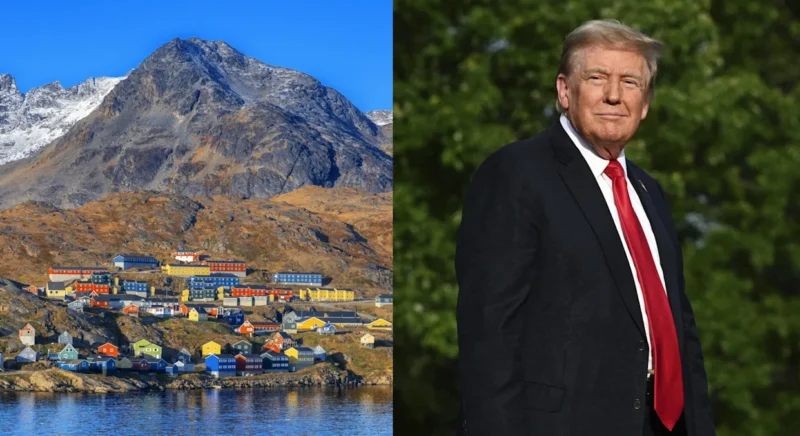
President Donald Trump has sharpened his rhetoric over Greenland, declaring that the United States will “do something on Greenland whether they like it or not,” framing the Arctic territory as a frontline in great-power competition with Russia and China.
Speaking at the White House while hosting oil executives to discuss Venezuela, Trump argued that failure to act would allow Moscow or Beijing to gain a strategic foothold. “We’re not going to have Russia or China as a neighbor,” he said, presenting U.S. control of Greenland as a national security imperative rather than a diplomatic option.
Trump has repeatedly floated two paths: purchasing Greenland from Denmark or, if necessary, using force. While he insisted he prefers a deal “the easy way,” he warned that Washington could pursue “the hard way” if negotiations fail. Notably, when asked how much money it would take to secure Greenland’s consent, Trump declined to give a figure, signaling that the issue may no longer be primarily transactional.
The response from Greenland and Denmark has been unequivocal. Greenland’s representative in Washington, Jacob Isbosethsen, stressed that the territory is not for sale and belongs to its people. European allies have echoed that stance, warning that any move undermining sovereignty would strain transatlantic relations.
On Capitol Hill, resistance cuts across party lines. Senior Republicans and Democrats alike dismissed the idea of acquiring Greenland, with lawmakers emphasizing existing alliances and long-standing cooperation. House Speaker Mike Johnson downplayed any suggestion of military action, saying Congress is not considering such a move.
Yet the administration’s message remains deliberately ambiguous. Vice President JD Vance urged allies to take Trump “seriously,” highlighting Greenland’s importance to missile defense and Arctic security. With Secretary of State Marco Rubio set to meet Danish and Greenlandic officials next week, diplomacy may resume — but under clear pressure.
The bigger signal is strategic. After Venezuela, Trump is projecting a doctrine that prioritizes control, deterrence, and speed over consensus. Greenland is no longer just an Arctic island. It is becoming a test case for how far the United States is willing to go to redraw the map of influence in a rapidly polarizing world.
Russia-Ukraine War
Moscow Threatens to Strike British and French Forces in Ukraine

RED LINE DRAWN — Russia Warns Western Troops in Ukraine Would Be “Legitimate Targets” as UK and France Plan Post-Ceasefire Force.
Russia has issued its bluntest warning yet to Europe, declaring that any Western troops deployed to Ukraine would be treated as “legitimate combat targets,” a sharp escalation in rhetoric that underscores how fragile — and potentially explosive — any future ceasefire could be.
The threat came hours after Britain and France unveiled plans for a multinational force to deploy to Ukraine if hostilities pause. Meeting in Paris, leaders of the so-called “coalition of the willing” outlined a framework that could see thousands of European troops operating on Ukrainian soil to help secure airspace, protect maritime routes and assist in rebuilding Ukraine’s armed forces. French President Emmanuel Macron openly floated the idea of deploying French troops, while British Prime Minister Keir Starmer said the initiative would establish a legal basis for long-term Western military involvement.
Moscow’s response was immediate and unforgiving. In a statement, Russia’s Foreign Ministry warned that Western military units, infrastructure or depots in Ukraine would constitute “foreign intervention” and pose a direct threat to Russian security. Any such presence, it said, would fall squarely within the Russian military’s list of lawful targets. The ministry went further, branding the European initiative a dangerous “axis of war” that risks dragging the continent into a deeper, costlier confrontation.
The language matters. For the first time, the Kremlin is explicitly signaling that a post-ceasefire Western presence would not be treated as peacekeeping, but as an extension of the battlefield itself. That framing narrows the diplomatic space and raises the stakes for European capitals weighing how far they are willing to go to guarantee Ukraine’s security.
Russia continues to argue that its 2022 invasion was a pre-emptive move to stop NATO’s eastward expansion and prevent Ukraine from becoming a Western military outpost. It has long insisted that the stationing of foreign troops in Ukraine is a non-negotiable red line. Ukraine and its allies counter that Moscow’s real aim is territorial conquest and long-term domination, pointing to Russia’s occupation of nearly 20 percent of Ukrainian territory.
The United States has drawn its own limits. Washington has ruled out sending American troops but has voiced support for security arrangements designed to deter future Russian attacks. That gap — European ambition paired with American restraint — is now shaping a dangerous gray zone.
At its core, the dispute exposes the central paradox of any Ukraine ceasefire: Kyiv wants guarantees strong enough to prevent another invasion, while Moscow sees those same guarantees as provocation. Russia’s warning suggests that unless this contradiction is resolved, even “peace” could come with the constant risk of a wider European war.
-

 Analysis10 months ago
Analysis10 months agoSaudi Arabia’s Billion-Dollar Bid for Eritrea’s Assab Port
-

 Opinion17 years ago
Opinion17 years agoSomaliland Needs a Paradigm Change: Now or Never!
-
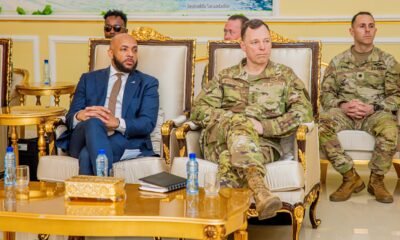
 Interagency Assessment4 weeks ago
Interagency Assessment4 weeks agoTOP SECRET SHIFT: U.S. MILITARY ORDERED INTO SOMALILAND BY LAW
-
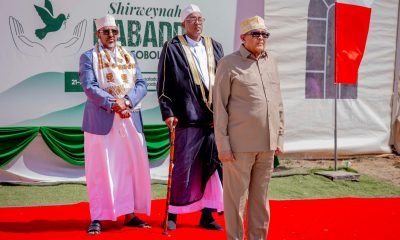
 Somaliland3 months ago
Somaliland3 months agoSomaliland Recognition: US, UK, Israel, and Gulf Bloc Poised for Historic Shift
-

 EDITORIAL1 year ago
EDITORIAL1 year agoDr. Edna Adan Champions the Evolving Partnership Between Somaliland and Ethiopia
-

 ASSESSMENTS10 months ago
ASSESSMENTS10 months agoOperation Geel Exposes the Truth: International Community’s Reluctance to Embrace Somaliland as a Strategic Ally
-
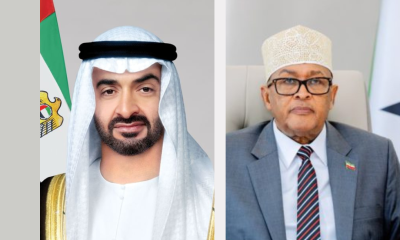
 Somaliland12 months ago
Somaliland12 months agoSomaliland and UAE Elevate Ties to Comprehensive Strategic Partnership
-
Top stories2 years ago
Ireland, Norway and Spain to recognize Palestinian state






